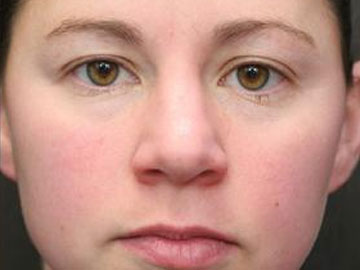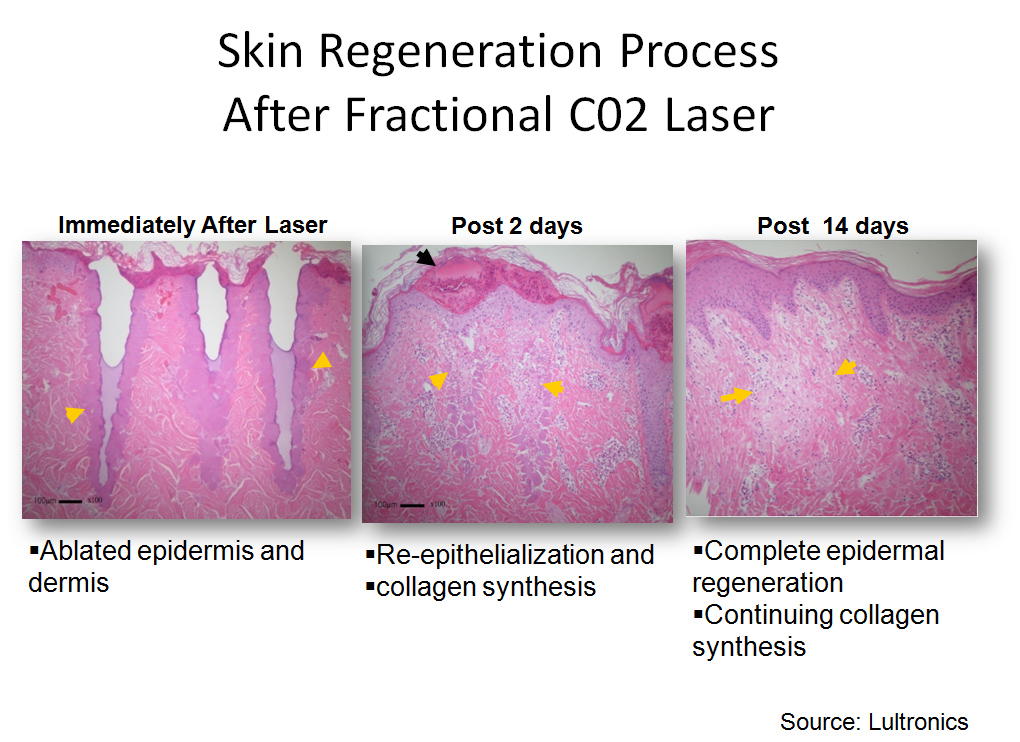Laser resurfacing: Effective wrinkle treatment
Laser resurfacing is designed to treat wrinkles and minor facial flaws, but it may not be the best treatment option for you. The following information can help you decide if laser skin resurfacing is a viable and desirable option to help you achieve the look you desire.
Aging is a natural process we all go through, and along with aging comes wrinkles. While father time is relentless in his march, advances in science and technology have helped slow the march of time thereby helping you reclaim your youthful, glowing skin. Skin resurfacing, in its many forms, may be the answer you are looking for. Laser resurfacing is quickly becoming the abltative (wounding) skin resurfacing option due to its precision and excellent outcomes. This technique helps to remove sun-damaged and worn skin allowing room for newer, healthier skin to take its place. While laser resurfacing does offer fantastic benefits, we know that this treatment option is not for everyone.


How do you prepare ?
Before scheduling laser resurfacing, you need to meet with Dr. Ghohestani to discuss the factors that determine whether this procedure is likely to work well for you. This meeting generally includes:
Laser resurfacing is similar to other ablative techniques (i.e. chemical peels, microdermabrasion, etc.). The difference is that laser resurfacing is more precise in its treatment location and depth. This gives the doctor more control over treating sensitive areas of the skin, such as the skin around the eyes.
An entire lifetime of blemishes and sun damage can be erased through a simple laser treatment performed at our clinic. The first resurfacing laser was the CO2 laser. Since then, scientists have developed the fractional CO2 laser, which produces similar results with dramatically less risk and less downtime.
This leads to improved skin texture and tone, reduction in wrinkles and scars, and more even pigmentation throughout the treated area. Additionally, deeper wrinkles and acne scars are reduced, re-contoured, and in many instances eliminated, leaving a healthier, more even glow. This regenerative process will continue for six to twelve months after resurfacing. During this time the skin will continue to improve. Fifteen to thirty percent firming can be achieved. Loose eyelids and lax skin is tightened. Resilience and elasticity are restored. Any remaining wrinkles will continue to improve. The procedure lasts 30-60 minutes.
Laser Resurfacing: The Good News
Laser resurfacing can improve fine wrinkles and acne scars. Some lasers (the CO2 and erbium) accomplish this by vaporizing superficial damaged skin cells and allowing the stem cells to regenerate new skin. As a result, it will smooth your skin texture, improve your complexion, and possibly your skin color. Fine wrinkles will be removed and dynamic (deeper) wrinkles will be improved (see Wrinkles for an explanation of dynamic and fine wrinkles). Acne scars will appear less obvious.
The CO2 laser will also tighten your skin by two methods:
Laser Resurfacing: The Bad News
Fractional C02 is your best option to reduce fine lines, get rid of aged spots and look about 10 years younger. Unfortunately, laser surgery is not a panacea. Your wrinkles and acne scars will improve but will not simply vanish, and more than one treatment may be required to achieve the result you desire. Because of a deeper penetration, C02 laser is more painful than AFT/IPL.
Also, recovery from some laser procedures is not a snap; the redness may typically last for days or weeks (more below). Interestingly, the longer the redness lasts, the better the final result.
Laser Surgery: How and Why It Works?
To understand why the laser works, you must first appreciate some basics about your wrinkles and acne scars. Wrinkles and acne scars share one very important feature: they are lower than the surrounding skin. Because of this, light casts shadows in them, making them visible. Look in the mirror to convince yourself. You will see that everywhere there is a wrinkle or acne scar, there is a shadow.
If all wrinkles and acne scars were flush with the level of the skin, the eye would not see them because there would be no shadow. Laser resurfacing works because it makes the wrinkles (acne scars) less visible by vaporizing the surrounding skin (as in the case of CO2) and by stimulating collagen production which makes wrinkles less deep (as in the case of the CO2). Because your skin is vaporized (due to the CO2 laser), it is like a burn.
Your skin will be oozing and weeping for 1-2 days, since there will be lots of microscopic holes into your skin. The deeper your wrinkles and acne scars, the more treatments you will need. Shallow wrinkles and scars may be vanished with one treatment.

The Advanced Florescent Technology (AFT) or Intense Pulsed Light (IPL) laser is slightly different than the other two in several important ways. First, it does not actually vaporize away the top layer of the skin, so there is no open wound and no recovery period.
You may put make-up on immediately and return to work. There is also no discomfort of the procedure, so you do not need to be anesthetized. AFT works by stimulating collagen formation within your skin without removing the older superficial skin layers. Therefore, one treatment with AFT may not be enough to see significant improvement in reducing fine lines. The AFT is, however, very effective in treating pigmented spots.
Some may notice improvement is skin texture, age spots as early as the first session. You may need 6-8 sessions to appreciate a significant difference. Typically, 6-8 session of an AFT equals one Fractional Co2 in terms of skin rejuvenation.
Carbon Dioxide Vs. Erbium Laser Vs. AFT/IPL: Which One is Right for You?
Choosing a laser is a very personalized decision and depends on how much improvement you want and how much recovery time you can afford. AFT/IPL is the most popular laser.
If you are looking for a laser to treat your fine wrinkles and aged spots and you want to see the results after one or two sessions, the fractional C02 is the right choice for you.
The fractional carbon dioxide (CO2) laser resurfacing is more effective than Erbium (Fraxel) and AFT (works well on deeper wrinkles and scars) and can surprise you by its immediate effect on resurfacing and skin tightening. The Fractional C02 laser, however, imposes more recovery. Typically, one comes on a Friday to receive the laser treatment and rest at home for 2-3 days before going back to work. Your face will be red for about 7 days; the redness can last for weeks (rare).
Erbium Fraxel provides more modest improvement, less recovery time but it’s less efficient than C02. Therefore, we offer fractional C02 and AFT lasers; AFT laser is an upgraded form of IPL.
If you are patient and prefer less down time, AFT is a great choice. AFT lasers offer less improvement among the three, but have the huge advantage of imposing no recovery time. Multiple AFT/IPL treatments are necessary for obtaining a result close to a Co2 laser. After an AFT laser, you may put your make-up on and return to work immediately. Because AFT imposes no recovery and is effective for wrinkle reduction in some people, it enjoyed a period of great popularity. However, you may see little improvement with each session of AFT; multiple treatment sessions are necessary.
Facial Skin Resurfacing FAQ’s

At the Texas Institute of Dermatology, we want you to have an excellent outcome and to feel that your needs and concerns have been promptly addressed in a caring and sensitive fashion. We strive diligently to ensure your satisfaction, comfort, privacy, and safety. All treatments are supervised or performed by a dermatologist with many years of successful experience in a large variety of procedures.
Many treatment modalities are available, and we can recommend the one or two that are most likely to meet your needs; we’re here to meet your needs and help you realize your aspirations. At our clinic in San Antonio, Texas, we serve communities throughout Bexar and Kendall counties, including San Antonio, Boerne, Leon Springs, Fair Oaks Ranch, Canyon Lake city; many of our patients also come from San Marcos, New Braunfels, Kerrville, Austin, Wimberley and Corpus Christi.

For an appointment, call 210-698-6777
Stone Oak Clinic: 238 North Loop 1604 E, Suite 208, San Antonio , TX 78232
Leon Springs CLinic: 24165 W IH-10, Suite 102, San Antonio, TX 78257
